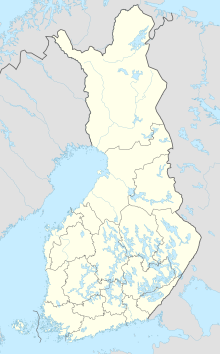Hamina fortress
| Hamina Fortress | |
|---|---|

Walls of the Hamina fortress
|
|

Caponier and main fortress wall
|
|
| Coordinates | 60°34′08″N 27°11′49″E / 60.569°N 27.197°E |
| Type | Fortress |
| Site information | |
| Controlled by | 1721–1743 1743–1917 1917–Present |
| Site history | |
| Built | 1721–, 1791–1792, 1803 |
| In use | 1721–1836, 1845–1855 (as fortress) 1836–Present (as garrison) |
Hamina Fortress is located in Finland on the coast of the Gulf of Finland and it is an integral part of the Hamina city centre. Hamina fortress is a Star fort, representing the Renaissance ideal city embodied by Palmanova city in northeastern Italy.
The location of the fortress used to be the marketplace of the Vehkalahti, which had received city rights in 1653 under the name of Vehkalahden Uusikaupunki. The city was destroyed in the Great Northern War in 1712. The construction of the fortress began by Swedish general Axel von Löwen after the Treaty of Nystadt in early 1720s. Von Löwen wanted to prevent the Russian advance into the Gulf of Finland as envisioned by the Tsar Peter the Great, who wanted to open the sea routes for Russia. Alongside the Hamina fortress the construction of another fortress also began in Lappeenranta.
Protected by the six bastions, named after other Finnish fortified cities, of the fortress the garrison was responsible for defending the city and the coastal road.
After the Russo–Swedish War of 1741–1743 the still-unfinished fortress had to surrender to Russian troops and the area was annexed by Russia. General Alexander Suvorov continued the construction of the fortress.
At the beginning of the 19th century Hamina fortress one of the many fortresses that were reinforced as part of the South-Eastern Finland fortification system. Dutch-born general Jan Pieter van Suchtelen considered the fortress obsolescent and inadequate, so the north-facing defences on the shore of Kirkkojärvi lake were demolished and replaced with a new large masonry bastion according with Caponier system in 1803.
...
Wikipedia

